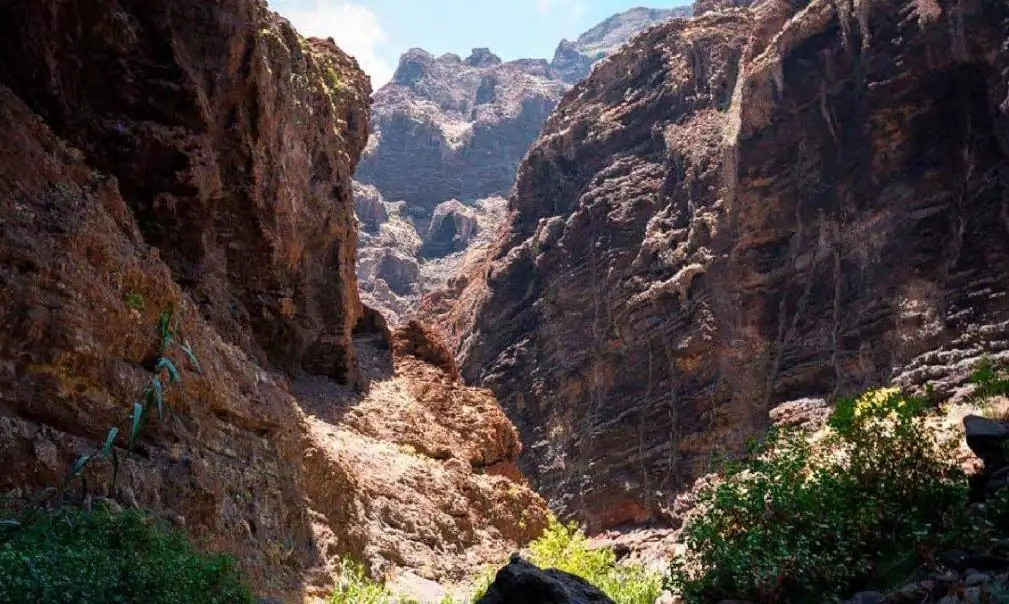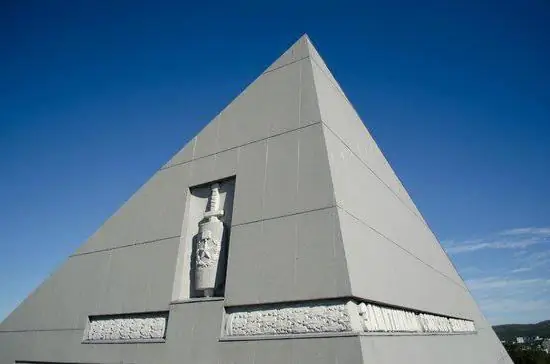- Author Harold Hamphrey [email protected].
- Public 2023-12-17 10:06.
- Last modified 2025-01-24 11:10.
On the territory of Russia there are many small peoples who, even in the era of globalization, manage to maintain their identity. They honor their traditions, still continue to worship the same gods as their ancestors, and in many ways lead a primitive way of life. One of these peoples are the Saami, who live on the Kola Peninsula. Tourists from different cities come here every year to get to know this amazing ethnic group better. A well-known attraction is a real Sami village in the Murmansk region, where the Sam Syit Museum is located. Here they will tell and show how real Sami live. A lot of interesting things await visitors

Who are the Saami
The Saami are a small people belonging to the Finno-Ugric group. Representatives of the Saami live on the territory of four states - Russia, Finland, Sweden and Norway. The total number of people is about 50,000 people, but in Russia there are quite a few of them - less than two thousand. They live mainly on the Kola Peninsula. For the general public itselffamous is the Sami village in the Murmansk region, where locals invite guests and where they have equipped traditional dwellings to show tourists.

Origin and related peoples
As already mentioned, the Sami have relatives in neighboring Scandinavian countries. They call themselves Sami (self), which has a lot in common with the Finnish designation suomi (suomi). In ancient times, the Slavs called them Lapps. Ethnologists claim that it is from this name that Lapland originated. What meaning this word would have now, unfortunately, is not known for certain. One of the versions is the designation of a people who live far away, since Lappe in Finnish and Estonian means “far”, “last”.
References to the inhabitants of these lands are found in the memoirs of travelers as early as the 16th century.
At the beginning of the 20th century, the Russian Geographical Society organized a large expedition to the lands of the Saami in order to study the life, culture and origins of this ethnic group. In 1927, several scientists went to find out where the Sami village was located. Several such objects were discovered in the Murmansk region. They subsequently published their observations. Very valuable material about this people was collected. In the second half of the 20th century, Sami tales were even published, written down from the words of the Sami just during this ethnographic expedition.

How to get there
Sami village in the Murmansk region lies in the depthsKola Peninsula, and you can only get to it by car. First you need to fly (or take a train) to Murmansk, and from there by car along the bypass road to move towards St. Petersburg. From the main road, turn towards Revda and Lovozero. Please note: despite the fact that the road from the highway is paved, the quality of the pavement is very mediocre, so you need to drive carefully. Many prefer to order a taxi, as all local drivers know where the Sami village is located. The Murmansk region is quite large, but it is easy to navigate in it, as there are enough signs not to get lost. On the way to the Sami, beautiful views of the harsh, but very picturesque nature open up.

History of the Saami
Scientists are convinced that the Saami are the descendants of the peoples who settled these territories in ancient times. There is chronicle evidence that a harsh northern people with special customs and traditions lives in Karelia. The ancient ancestors of the locals even left drawings on the rocks. During the excavations, the remains of ancient tools were found, which were made of stone.
Some researchers have suggested that the Saami are in some way related to the South Siberian peoples. This is indicated by many similarities in languages and in appearance. Perhaps, once these tribes lived together, but due to reasons unknown to us, they separated: some left, while the second preferred to stay. Now he tells his descendants about their way of life onlySami village in the Murmansk region, or rather, its inhabitants.
Religious beliefs
The Saami were originally pagans. Their beliefs have much in common with the religious beliefs of the Saami in Scandinavia, but they also have their own characteristics.
The Saami have a very strong trade cult and the cult of ancestors. Each of the types of craft - fishing, hunting and reindeer herding - has its own master spirit, which protects from illnesses and helps in work. Animal sacrifice is widespread to appease the spirits and secure their favor.
The cult of ancestors stands out in particular. It was believed that the dead continue to help their living relatives, even influence the weather and help during hunting or fishing. Therefore, the dead were coaxed, sacrificed and fed.
At the moment, almost all Saami are Christians. However, the rites persisted for quite a long time. Now they are held only for the entertainment of tourists who want to personally find out what a Sami village in the Murmansk region is and how it lives. Photos of such events are always bright, original, colorful.

National holidays and customs
One of the most amazing national holidays of the Saami is bear games - "Tall Sir" in Saami. In ancient times, the bear was one of the most revered animals among the Sami. He was respected, but also feared at the same time. At the end of the 20th century, by decision of the National Cultural Center, Tall Sir was revived. As part of the holiday, a bear hunt is imitated, as well assports competitions are held between the most daring and dexterous Sami.
Also, the traditions of the summer Sami games are being revived. This event includes wide folk festivals with performances by ethnographic groups. You can be sure that the Sami village in the Murmansk region is also actively participating in these events. Feedback and impressions from the audience then remain only the most positive.
The city of Olenegorsk also hosts an annual festival of Sami music. It was first organized in 1996. The Sami village also actively participates in these events. In the Murmansk region there are all conditions in order to demonstrate in all its glory the folk life and customs of the local natives. The Saami, like many years ago, sew their own costumes and outfits, only now for performances.

Sam Syit Open Air Museum
Recently, the Sam Syit Museum has become very popular, where everyone can get acquainted with the life and culture of the Sami. There is a regular excursion to the Sami village. The Murmansk region is the only region where the Saami are represented in Russia.
Here, right on the street, there are wooden images of Sami idols. They say that in order to fulfill a cherished desire, it is necessary to hug the statue, whisper the desire and appease it with a yellow coin. The Saami sincerely believe that such communication with spirits helps to solve pressing issues.
Judging by the reviews, the townspeople really like the small zoo where the indigenousrepresentatives of the fauna of the Kola Peninsula: northern blue foxes, foxes and rabbits. The latter often walk around the village on their own. Real reindeer also live there. Guests will be shown and told in detail about these amazing animals, which once helped a person to survive in harsh natural conditions. You can even feed them, which always delights the kids. And adults, judging by the reviews, remain impressed by communicating with noble handsome men. The local reindeer breeder is ready to talk for hours about his wards, who are completely tame and absolutely not afraid of humans.
On the streets of the village there are kuvaks - the national type of dwelling in which the Sami lived and took refuge from the weather. Visitors note that they have not seen anything like this before, which, however, is quite understandable. But that doesn't make it any less interesting.

Entertainment
There are a lot of entertainment and activities prepared for guests who come here. Here you can taste the traditional Sami treat - venison roasted over a fire. According to visitors, this is a very tasty and fragrant dish that perfectly satisfies hunger after visiting the Sami possessions. And what delight you experience from a walk on a reindeer sleigh! It is impossible to describe in words, you just need to feel it.
Near the village there is a spring lake "Seven Keys of the Sami". A special ritual is also associated with it: you need to come up, wash yourself, throw a coin into the lake and thank the spirit of the lake for hospitality. You can swim in it if the weatherallows.






